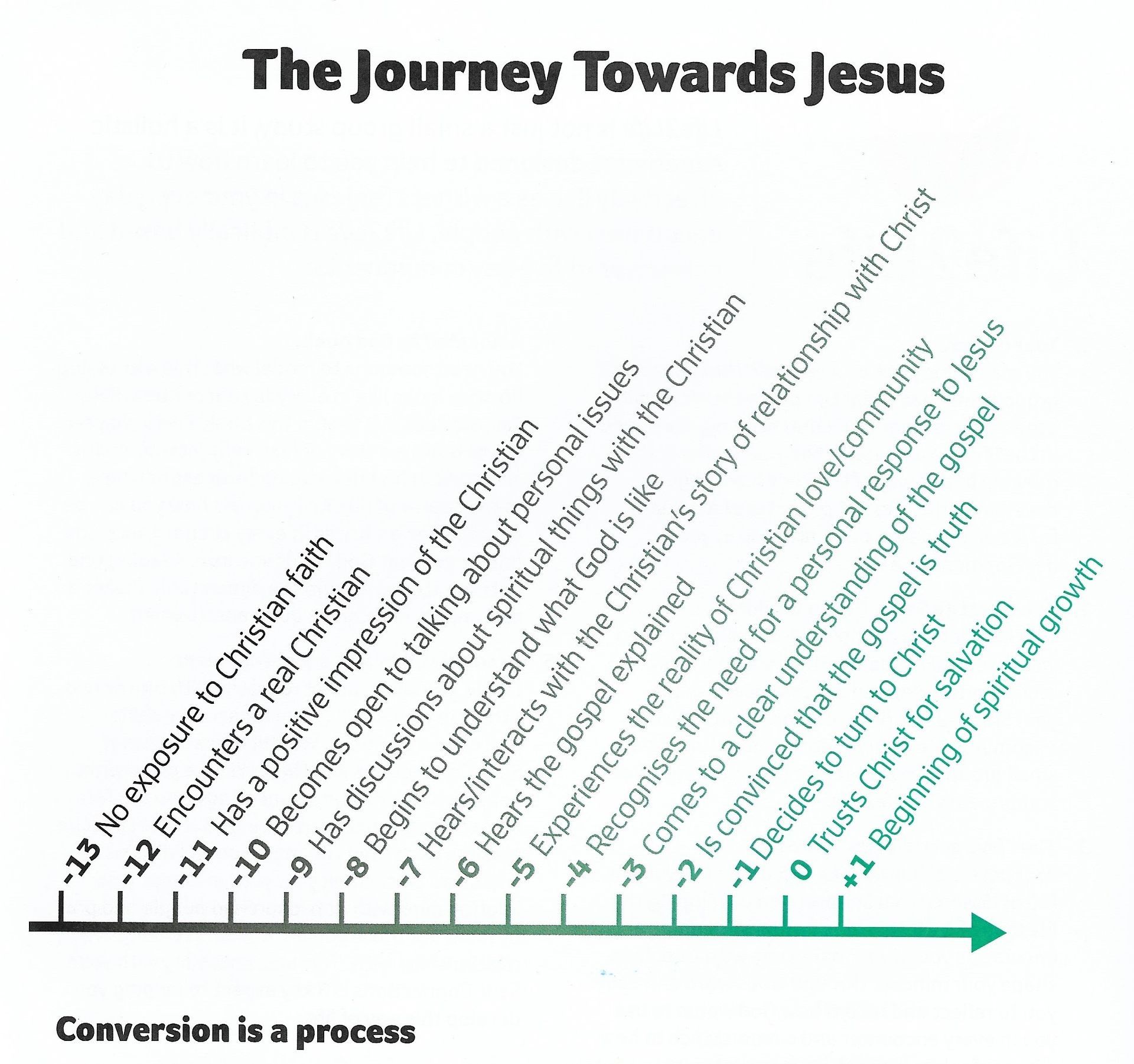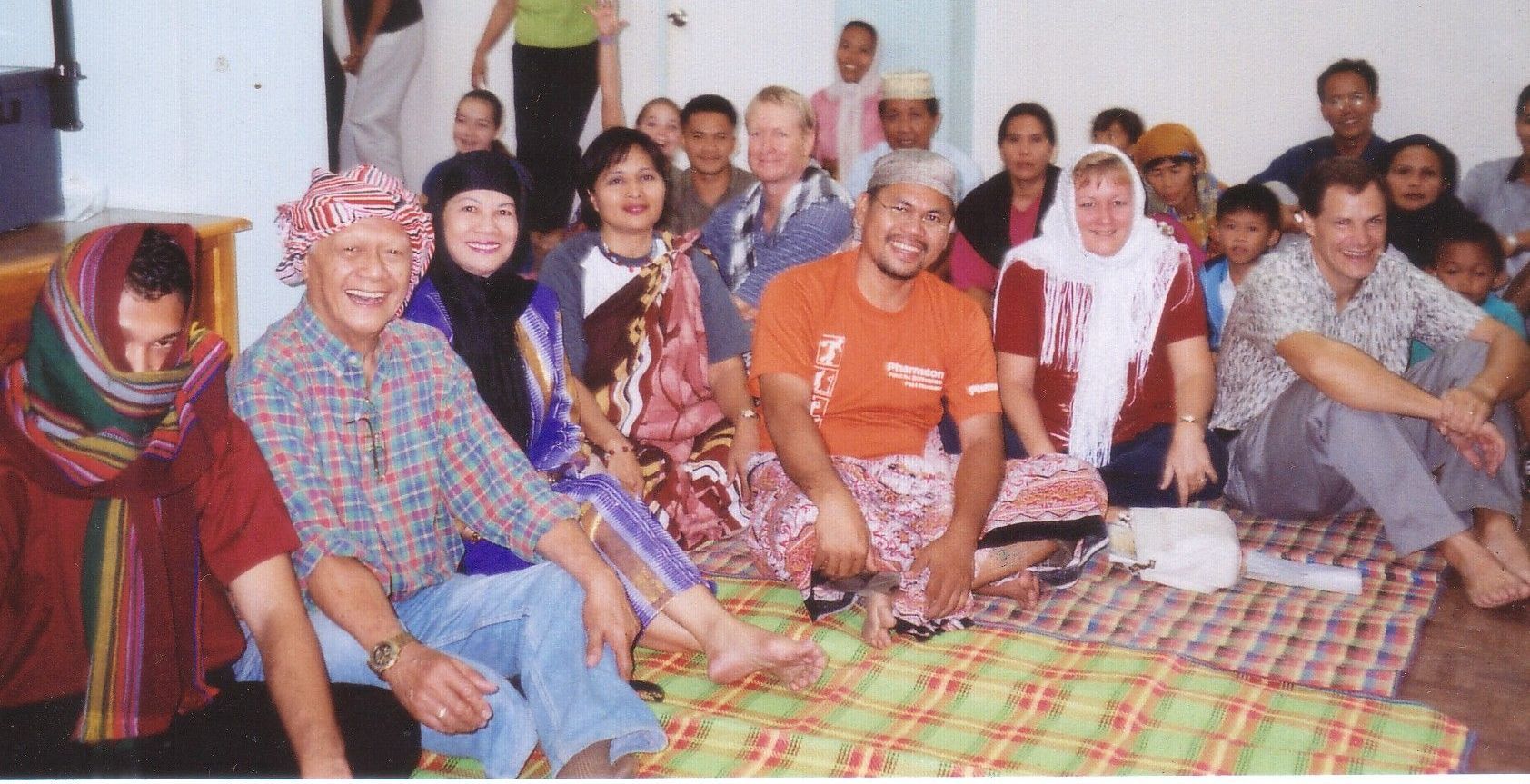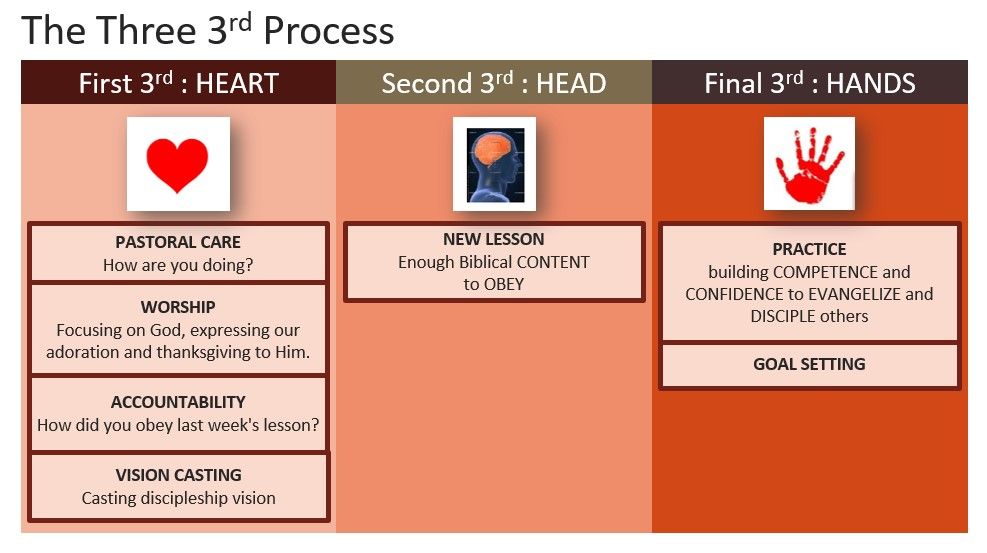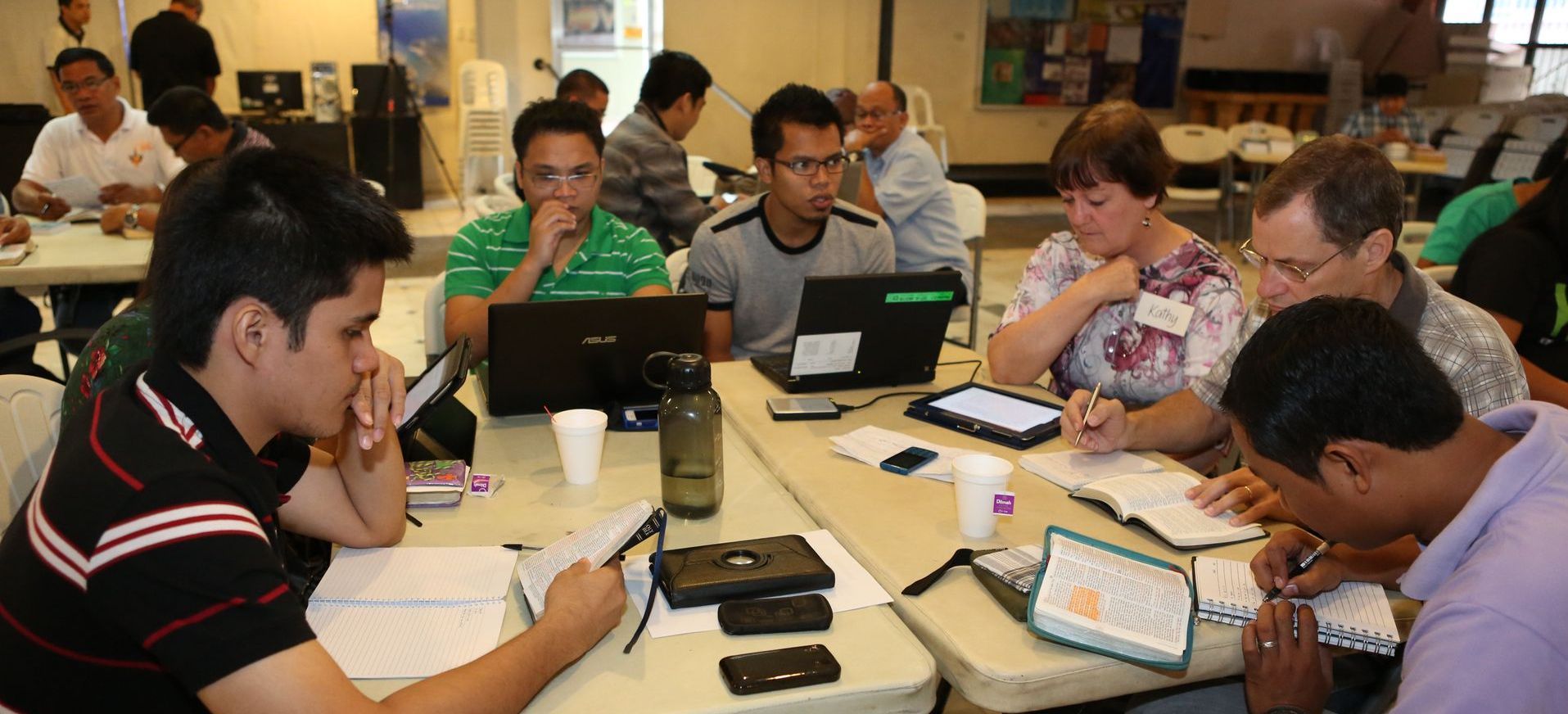Is evangelism an event or is it a process… or both? And why does that matter?
When I was in Bible College, I was introduced to the
“Engle Scale.” This was a chart that showed how the
whole of coming to faith in Christ and of
growing in Christ is a
process that takes time. Accepting Christ and being born again is an event. At one moment we were lost and the next moment we had eternal life. But
coming toward Christ is always a journey, and growing in Christ as a disciple is a journey.
Saddleback Church in California used the Engle Scale in their evangelism training and adapted it to include their purpose-driven discipleship process. They showed that many people move through the following stages, though it might be at different speeds and in different order, from level
-6 (Resistant Stage) through
Ground Zero
when they Receive and Believe, and on to
+5 (Mature Christian Living for God’s glory as disciples)…
-6 Self-satisfied, skeptical, resistant or spiritually apathetic. (Resistant stage)
-5 Becomes aware of unmet need or spiritual void in life. (Spiritual awareness)
-4 Begins looking for answers to questions or solutions to problems. (Seeker stage)
-3 Considers the difference between themselves and believers. (Consideration stage)
-2 Learns how and why to become a Christian. (Understanding stage)
-1 Ready to believe and Receive Christ. (Ready stage) The fruit is ripe.
GROUND ZERO: NEW LIFE IN CHRIST!
+1 Baptized and connected to a church family (Membership CLASS 101)
+2 Practicing the habits necessary for spiritual growth. (Maturity CLASS 201)
+3 Using your God given talents (SHAPE) to serve others. (Ministry CLASS 301)
+4 Sharing the Good News with non-believers. (Missions CLASS 401)
+5 Living out one’s Life Purpose for the glory of God. (Magnification CLASS 501)
The purpose of this flow chart was to help Christians understand that unbelievers might be at different stages in their journey towards Christ, and that our approach should be different depending on their stage. Saddleback Church’s training included the following chart with
suggestions of methods to use with lost people at the different stages of their journey.
Friendship Evangelism
How to Cultivate an Eternal Relationship
They also provided this simple list for how to meet lost friends at their stage in their journey to Christ…
1. Start praying for each person.
2. Build a relational bridge with them.
3. Begin a conversation about spiritual things. Invite them to church. (weekend service or event)
4. Share your story or personal testimony with them.
5. Offer to study the Bible together
6. Invite them to accept Christ as their Savior. (Ground Zero)
7. Connect them to the church family. (101 CLASS, Baptism, Small Group, etc.)
Another approach to
seeing evangelism (or witness) as a process is that of
“Life2Life – Learning to Live as a Witness for Jesus in my Everyday Encounters,” by my brother, John North -
https://mylife2life.com/
As John says, “A person may not follow this exact order in their journey towards Christ, or they may take several steps at once. You may need to add/change some steps for the specific person you are relating to. Two things can greatly accelerate their movement through this path
1) A Crisis, and
2) A Christian (that’s you) who is focused on helping them find Christ
Also we must realize that God may already have someone ready to trust Christ, although we have just encountered them.”
This
Life2Life workbook for groups is a great way to lead a group of believers through 18 sessions of learning to live all of life as a witness.
Jesus' Evangelism Training
It’s interesting that in Matthew 10 and Luke 10 as Jesus is sending out his disciple, the 12 and the 72, He includes such instructions as, "Pray for more laborers, Go to their places, Stay with one of them for a while, Eat and drink with them, Love them with healing and deliverance, preach the gospel to them." Each part of that indicates to us that
winning people to Christ is multi-faceted in approach.
- Presence in their comfort zones
- Spending time with them
- Eating with them
- Showing them visibly the love and power of God
- Sharing the gospel
God uses all these things to move people towards Himself.
We Still Need The Gospel Message
We also have to realize that the spoken gospel is necessary for them to be saved. Sometimes Christians spend so much time being relational that they never get to speaking of spiritual things. They never actually get to the gospel. But if our friends never hear and believe, they will never be saved (Romans 10:14,15,17). But at the same time, we recognize that
God uses various things to prepare the hearts of lost people over time, and we can have a part in that.
Sometimes the Gospel Can Come First
A missionary team working amongst an unreached group from another religion in SE Asia spent almost 7 years in an area. They spent some years serving the people and building friendships, only to find that the ones they had invested in were not interested. So, they changed their approach, and shared the gospel message right up front in a culturally suited way. Then, depending on people’s responses to the gospel, they would spend their time relationally investing in the seemingly responsive people.
They used the gospel as a filter to find their “persons of peace” whom they would invest in relationally. This actually proved far more fruitful for them.
The point is that we have to be alert to where people are in their spiritual sensitivity, and minister to them accordingly. I have to admit that I am one to jump right to the gospel presentation early on. I know God can use that even with those who are not ready. But I have also learned through experience, to recognize when someone is open to friendship with me even if they are not ready to surrender to Christ. I learned that I need to be intentionally sharing the gospel often, but I also need to build those friendships over time even with people who don’t accept Christ. They may just need more time, or more knowledge, or more evidence of genuineness in the life and love of Christians.
Why is this important?
- Because we need to be patient as people work through their issues.
- Because sometimes we need to remove rocks before planting seed.
- Because a study showed that most people hear the gospel 7 times before accepting Christ. Investing over time is worth it.
- Because not everyone is good at sharing the gospel message, but each of us can help someone at some stage as we live and love in the name of Christ.
- Because some Christians feel like a failure if they haven’t shared the gospel with someone yet, but if they have moved someone closer or have broken down some barrier, it’s a reason to rejoice.
- Because helping move a person one step closer on the journey is a victory.
In
Life2Life John shares a good approach to walking with someone on their journey toward Christ. He shares the following
stages we can pursue while investing in someone else’s journey.
Acquaintance -> Friend -> Personal Conversations -> Spiritual conversations -> The gospel
To Think about…
- How can you move to the next level with an acquaintance or a friend?
- How can you help your believers to see that everyone is on a different journey that takes different approaches?
- How can you put practical tools, actions, activities and ideas in the hands of your current believers, so that they start joining in the work of journeying with people towards Christ?














